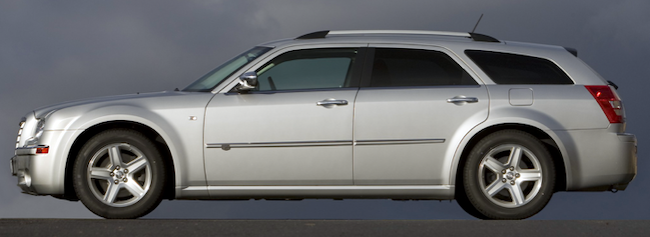The potential confusion is caused by the word "hardtop." That's because the circa-1950 American sporty coupes lacking full-height B-pillar were called "hardtop convertibles" -- the idea being they were like convertibles, but with a fixed, metal top. After a while, such cars were commonly called simply "hardtops."
But for the 1955 model year, General Motors introduced some four-door models that lacked a complete B-pillar. For lack of a clear alternative, they were usually called "four-door hardtops."
The present post presents General Motors' first such bodies. One appeared for 1955 and two others showed up for 1956.
GM dominated the US auto industry at the time, and could afford to invest more money into tooling than its rivals. So these early -- experimental, from a marketing standpoint -- cars weren't just four-door sedans with sawed-off B-pillars. Instead, they received tooling for altered passenger compartment greenhouses and other nearby details. By the mid-1960s, GM's four-door hardtops were more similar to four-door sedans.
Below are images of GM's three new bodies along with comparative photos of sedans and two-door hardtops. Selected brands are Buick and Chevrolet, though hardtop sedans appeared on every General Motors brand.
1955 Buick Special 4-door sedan - via Hemmings
GM's B-body was redesigned for 1954. The following year it became the basis for the 4-door hardtop. Above is the 4-door sedan.
1955 Buick Century Riviera Sedan - BaT auction photo
And here is a 4-door hardtop on the same basic platform. Buick hardtops all featured full wheel openings. Hardtop sedan differences include a wider rear door and reshaped after part of the slightly longer greenhouse. The window profile differs near the C-pillar in conjunctions with the wider door (perhaps having to do with making room for rolling down the side window). The backlight window wraps around farther and the C-pillar has a different shape than the sedan's.
1946 Buick Roadmaster Riviera - photo source not known
That C-pillar and backlight treatment seems to have been inspired by initial GM hardtop convertibles such as this 1949 Buick.
1956 Chevrolet Bel Air 4-door hardtop - Mecum Auctions photo
That C-pillar plus backlight shaping was even more similar for GM's 1956 A-body hardtop sedans such as the one pictured here.
1956 Chevrolet Bel Air 4-door sedan - Mecum
The standard Chevy 4-door sedan. Like the Buicks, the rear side doors are narrower than on the hardtop sedan seen in the previous photo. That's because it is a six-window sedan, the door sized for window roll-down.
1956 Buick Roadmaster 4-door sedan - car for sale
General Motors C-bodies also had hardtop sedans added to the lineup. Like the Chevrolet, the sedan was a six-window affair.
1956 Buick Roadmaster Riviera Sedan - car for sale
Again, a wider rear side door and C-pillar plus backlight treatment. The "French curve" aft pillar shaping was standard for GM C-body cars -- added elegance for upscale machines.
1955 Buick Special 2-door hardtop - car for sale
Now for photos of equivalent two-door hardtops. Here the C-pillar and backlight differ from those on the four-door models.
1956 Chevrolet Bel Air 2-door hardtop - Mecum
The same applies for Chevrolet.
1956 Buick Super Riviera - Mecum
But the C-body hardtop backlights seem to the the same.




















































